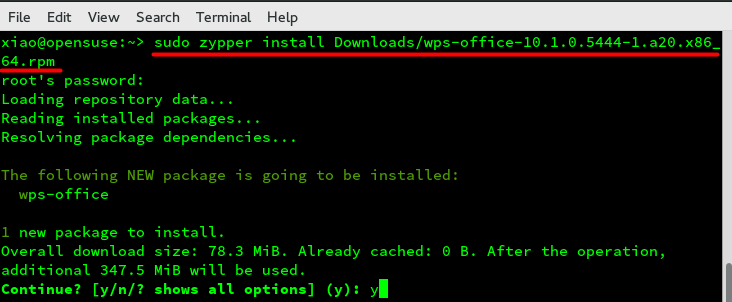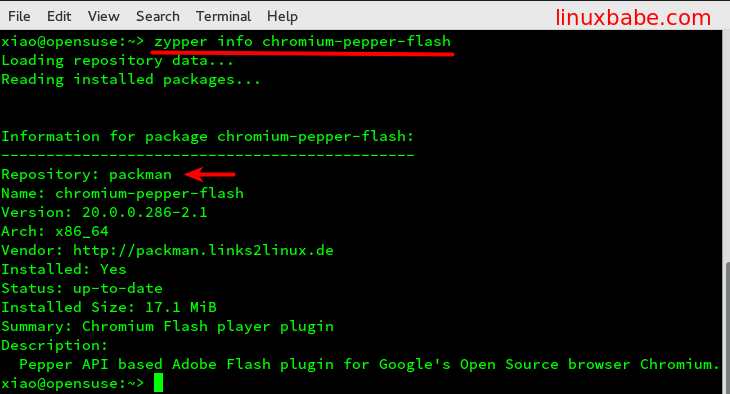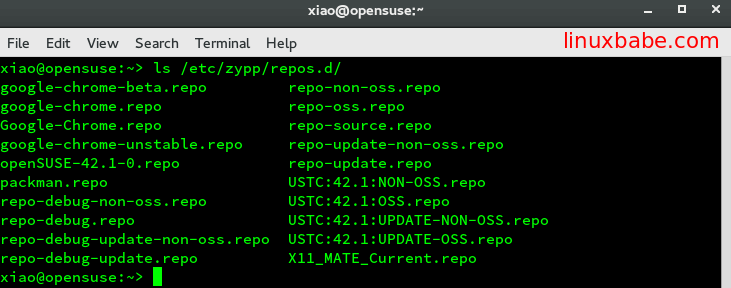Introduction to Zypper Package manager For OpenSUSE and SLE
Zypper is the command line package manager on openSUSE and SLE. It’s also a repository manager, having the capability of adding and removing repositories. It was first introduced in OpenSUSE 10.2 and SUSE Linux Enterprise 10 SP1.
Check Version
xiao@opensuse:~> zypper --version zypper 1.12.31
Managing Software Packages
install package
sudo zypper install <package_name>
remove a package
sudo zypper remove <package_name>
update all installed packages with newer versions
sudo zypper up
install local rpm package
sudo zypper install /path/to/the/local-rpm-package.rpm

Managing Repositories
Refresh repositories.This is equivalent to sudo apt-get update command in Debian and Ubuntu.
sudo zypper refresh
list all repositories
zypper repos

You can see the name and alias of your repos, whether it’s enabled or not. You can find duplicate repos with this command if your system has duplicate repos.
Remove a repository
sudo zypper removerepo <name-of-the-repo>
check which repository a package belongs to
zypper info <package_name>

Repo files
.repo files on OpenSUSE are similiar to .repo files on RHEL, CentOS and Fedora.
.repo files are stored under /etc/zypp/repos.d directory.

The text in the [ ] is the alias of the repo. keeppackages=0 means zypper will delete the rpm package from cache once the installation is complete.

You can remove a repo from OpenSUSE using sudo zypper removerepo <alias-of-repo> command, The same can be achieved by deleting the corresponding .repo file. For example, if I delete google-chrome.repo file, then Google Chrome repo will be remove from my system and I will not receieve any updates for Google Chrome browser.


